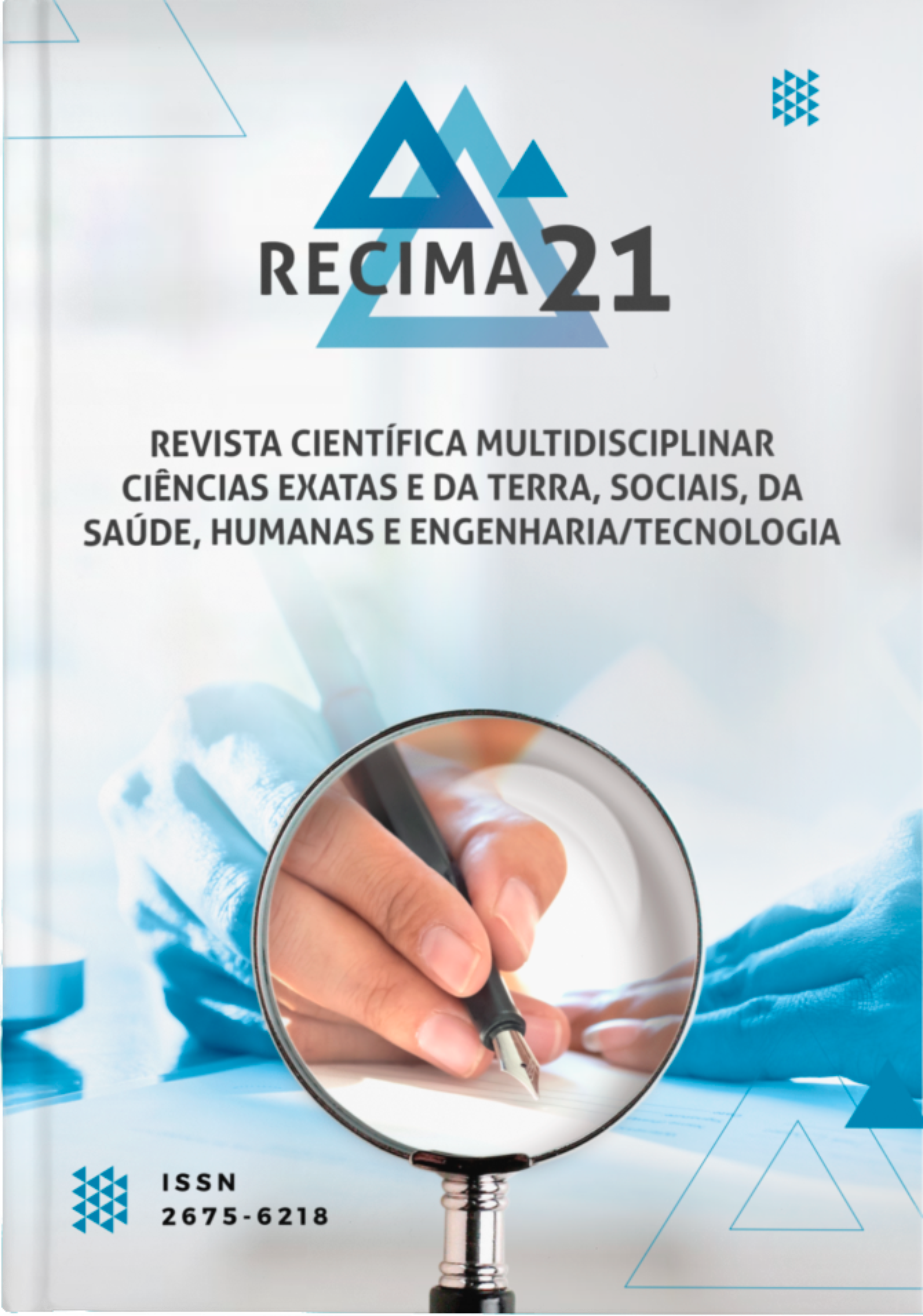APRENDIZAGEM E DOUTRINAÇÃO
DOI:
https://doi.org/10.47820/recima21.v2i7.562Palavras-chave:
Dimensão afetiva, Educação, Aprendizagem, Psicomotricidade, Psicopedagogia, NeurocienciaResumo
Todo o ser que aprende escolhe seu estilo de aprendizagem a partir de duas fontes, a que flui do inato/indivíduo ou a que vem do empírico/meio. O aprimoramento dos estilos de aprendizagem crescerá no espiral ascendente da movimentação de recursos cognitivos (Piaget, 1977) que, por sua vez, dependerá da significação dos resultados desse processamento que de um lado se converterá nos assunçores de Ausubel (1978) por adquirirem uma moral e/ou juízo de valor verdadeiro à equilibração das tríades: psicomotora (cognição/ motricidade/ afetividade) (Silva, 2020); psicanalítica (id/ ego/ superego) (Freud, 2010) e morfológica (Lobos do Telencéfalo/ Sistema Límbico/ Sistema Nervoso Central) (Wecker, 2001) que se equiparam a equilibração-pós-perturbação (Piaget, 1977) e, portanto, verdadeiro ao inato ou não na falta dessa equilibração; do outro lado se tornarão em simples placas informativas indicando uma possibilidade de significado na melhor das hipóteses ou psicóticos na pior delas. Segundo Wallon a dimensão afetiva da tríade psicomotora é que principia a equilibração ou desequilibração do ser cognoscente. “A sensibilidade tem um nível afetivo e outro cognitivo, assim como a motricidade e a linguagem. A revolução orgânica provocada pela emoção se apresenta nas sensações: viscerais, metabólicas, respiratórias, diminuição da acuidade da percepção do exterior [...]” (Wallon 1879-1962 como citado em Dantas, 1992, p. 93). O problema do artigo é: Wallon estaria certo? O que justifica a pesquisa.
Downloads
Downloads
Publicado
Edição
Seção
Categorias
Licença
Copyright (c) 2021 RECIMA21 - Revista Científica Multidisciplinar - ISSN 2675-6218

Este trabalho está licenciado sob uma licença Creative Commons Attribution 4.0 International License.
Os direitos autorais dos artigos/resenhas/TCCs publicados pertecem à revista RECIMA21, e seguem o padrão Creative Commons (CC BY 4.0), permitindo a cópia ou reprodução, desde que cite a fonte e respeite os direitos dos autores e contenham menção aos mesmos nos créditos. Toda e qualquer obra publicada na revista, seu conteúdo é de responsabilidade dos autores, cabendo a RECIMA21 apenas ser o veículo de divulgação, seguindo os padrões nacionais e internacionais de publicação.













